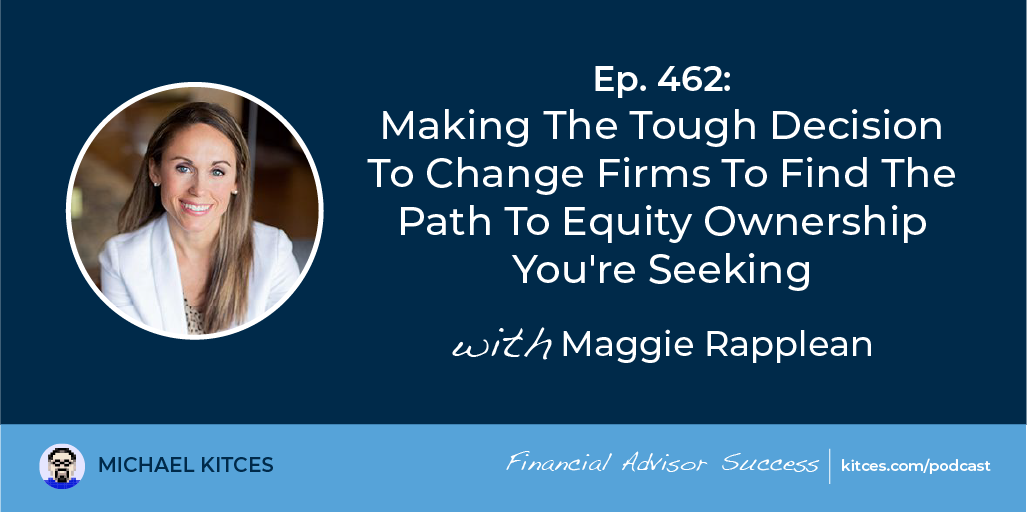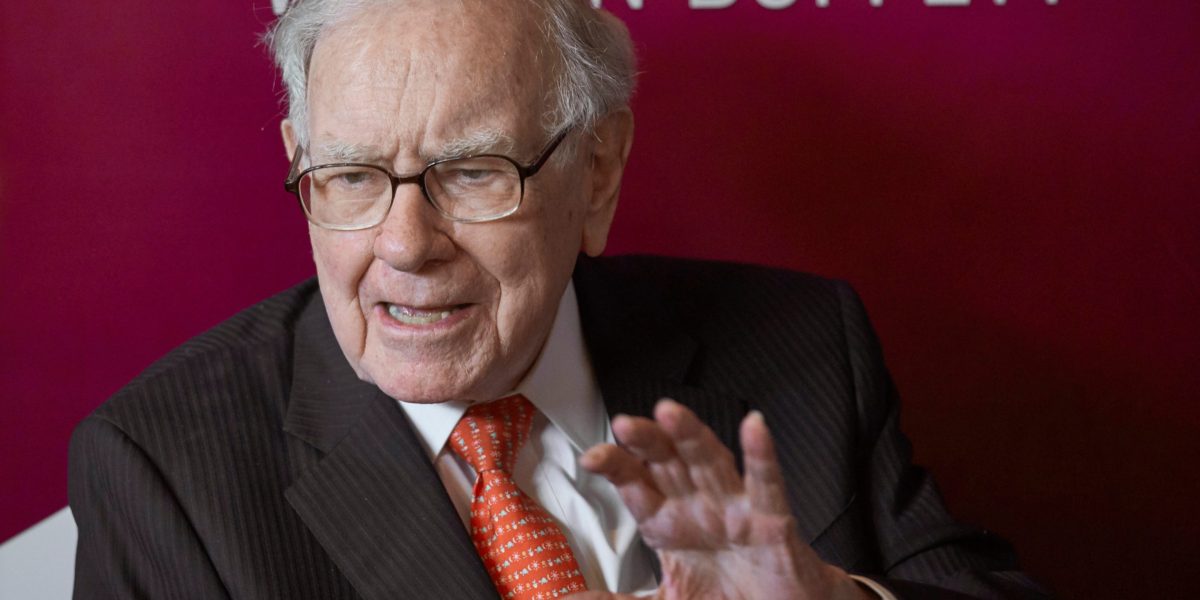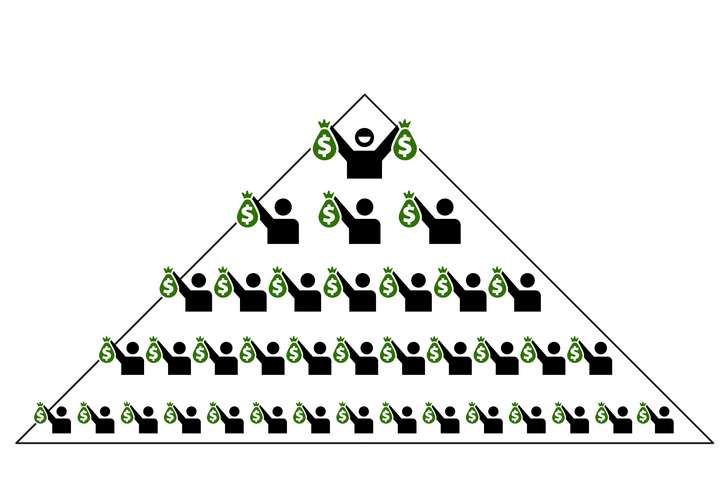Dave:Mortgage rates recently hit their lowest point in a year. Things were trending in a good direction and then the fed cart rates and mortgage rates actually just went up. It may seem confusing, but if you look at the economic data, what’s happening does make sense. And on today’s episode, I’m going to explain what is going on at the Fed, why mortgage rates have reacted the way they have, and share what I think we can all expect going forward. Hey everyone. Welcome to On the Market. I’m Dave Meyer. Thank you all so much for being here for yet another Fed Reaction video. You’ve probably heard a lot of people celebrating this Fed rate cut or predicting that this was the beginning of mortgage rates really coming down and affordability coming back to the housing market. But unfortunately, at least as of now, and I’m recording this on Halloween, so two days after the Fed rate cut, mortgage rates have only gone up.And if you listen to this show, you may understand a little bit why that’s happening so far, but I wouldn’t blame you if you were confused. The whole world’s saying the Fed cuts rates and mortgage rates go down and then they cut rates and mortgage rates go up. It’s a little bit weird, but I think I can help you all understand what’s going on here. So that’s the plan for the episode today. I’m going to talk a little bit about just what actually happened at the Fed meeting and then I’m going to go into the why of all this and just explain some of the economic background that is driving these things. So that’s what we’re going to do. Let’s jump in. First up, what actually happened at the Fed? Well, they cut the federal funds rate 25 basis points. That just means 0.25%. This is no surprise.This is what everyone was expecting. They basically said that they were going to do this and that’s why mortgage rates were trending down a little bit heading into this meeting because people were expecting and baking in the cut before it actually happened. That is one of the funny things that happens with these Fed meetings is that people watch this so carefully that the banks and people who create mortgage rates or other kinds of loans are planning ahead for what they think the Fed is going to do. They don’t wait for that actual decision to come. And so you would think, oh, the Fed did what they said they were going to do. Mortgage rates shouldn’t really move in any particular direction, but they went up, they were getting close to 6.1%. As of today, they’re about six and a quarter, so they went up 0.15%.So it’s not crazy, but it’s a reversal of a trend. We had been seeing mortgage rates trend down for a while and any reversal of a trend like that is notable and the reason things went back up and didn’t just stay the same was mostly because of what Jerome Powell said during his press conference after the meeting. It seems like most people in Wall Street institutions, bond investors, whoever, they’re all counting on that December rate cut. Then Powell comes out in his press conference and says, not so fast the December rate cut is, I think he said anything but certain was his exact quote, some doubt on something that the industry felt was a foregone conclusion. And that sort of changed sentiment and pushed bond yields back up and that’s why mortgage rates went back up. So that is sort of the long story of what’s going on here.It’s not that the Fed is not going to cut rates, I actually think they’re probably still going to cut rates several times over the next year, but it’s that they’ve sort of introduced a little bit of uncertainty into what people were feeling pretty clear about prior. Now the question of course is why did he do that? Why is he introducing uncertainty into the market right now? You would think that he wants to be as certain and clear as possible. Well, the Fed’s job, as we talk about a lot on the show, is two-sided. They are responsible for maintaining price stability, which is just the fancy way of saying controlling inflation, and they’re also responsible for maximizing employment. So really preserving and trying to maintain the labor market as best as possible. But right now we’re sort of in this unique time where both of those things are uncertain.We don’t know if inflation’s under control, it’s gone up four months in a row or is it getting better? We don’t know if the labor market is getting out of control, and I think what Jerome Powell is doing here is just trying to hedge and say that they don’t really know which is the bigger problem right now, currently as of the last couple of months, they think that the labor market breaking is the bigger problem. That’s why they’re cutting rates. They’re less concerned about inflation than they are the labor market. That’s why he cut rates. But he’s saying in keeping the door open for the idea that the labor market might be okay, inflation actually might get worse, and in that case they’re not going to cut rates. And so that is just this little bit of uncertainty that he’s introduced into the market and is something that we’re going to all have to keep an eye on.So that’s what I want to talk about more in this episode because we want to know not just where the federal funds rate is going, we want to know where mortgage rates are going, and for that we can’t just look at what Jerome Powell says. We need to understand where the bond market might be going. Mortgage rates do not follow what the federal funds rate does. Federal funds controls what is called the short end of the curve. This is short-term lending costs. Long-term lending costs like mortgages are broadly influenced by the same things that the Federal Reserve is thinking about inflation recession risks. There’s a lot more other variables, but those are two of the main ones that they’re looking at and what the Fed does and what bond investors do are not necessarily always the same thing, but I think if we do a deep dive into what’s happening with inflation in the labor market, we’ll get a clearer picture of what the Fed is likely to do and what the bond market is likely to do, and then we can understand where mortgage rates and affordability are going. So that’s what I want to do with the rest of this episode. We do got to take a quick break though. We’ll be right back.Welcome back to On the Market. I’m Dave Meyer here talking about what happened with the Fed, but we’re moving on from what happened last week and what Jerome Powell said, and we’re going to do our own analysis here of what’s happening with the labor market, what is happening with inflation right now, because that’s going to tell us not just what the Fed might do, but hopefully we could all see that honestly what the Fed does isn’t really impacting residential real estate right now. Mortgage rates are going up when they cut. I should mention it should help commercial real estate. The federal funds rate influences short-term lending, much more than long-term lending, and since commercial lending is shorter, rate cuts will have a bigger impact on commercial. So I should just mention that, but why we’re sort of digging into inflation in the labor market is not because we’re trying to figure out what the Fed is going to do.We want to understand what the bond market’s going to do because that will tell us where mortgage rates are going, which is going to tell us a lot about housing affordability, which is going to tell us probably what’s going to happen with the housing market in the next couple of months. So that’s the plan here. We’re in a weird time with the economy right now. We have been for a couple of years now. This has just been the one thing that is consistent over the last few years is the economy continues to send mix and weird signals. Right now we are seeing what I think is a declining labor market. I’ve talked about that on the show a lot and we’ve seen stubborn inflation at best and increasing inflation at worst, and this is unusual, this is not what normally happens. You do not in normal times have a risk of inflation at the same time as the risk of a recession or worsening labor market.Normally in I regular standard old economic cycle, what happens is you have an expansion, things are growing and growing and this is the good times, and eventually they overheat a little bit and that’s when you get inflation because there’s just too much demand for the supply in the market just across the entire economy that creates inflation. Eventually, the Fed will respond by increasing interest rates that will eventually lead us into a recession where unemployment goes up. So you can see the part of the economic cycle where there’s inflation and the part of the economic cycle where there’s job loss are typically on opposite sides, but given all sorts of complex things that are going on in the economy, whether it’s AI or tariffs or the monetary supply increases we’ve had over the last couple of years, we’re seeing both at the same time. And this is what we would call the risk of stagflation.Stagflation is pretty much the worst economic situation you can get. Some people would say deflation is even worse, but stagflation is pretty bad because what you have is increasing cost in the form of inflation and decreasing spending power because people are losing their jobs, which is just a nightmare for the economy. Now, I want to be clear, we are not in a stagflationary environment right now. Yes, the labor market has been getting worse. Unemployment rate has been going up, but we are still historically speaking, the labor market is doing well. We are at a 4.2% unemployment rate. That is very good. Secondly, inflation has gone up four months in a row, but it’s still at 3.1%, 3% inflation is not great. It’s not what we want and it’s heading in the wrong direction right now, but we have to keep things in perspective. 3.1% inflation is not an emergency in itself.It feels really rough right now because we’ve had really high inflation now four or five years in a row. So the compounding effect of all those things is bad, don’t get me wrong, but being in a situation where we have a 4.1 4.2% unemployment rate and inflation at 3.1% is not stagflation yet. Why am I talking about this? Because this stagflationary risk, these forces that are normally not existing at the same time, the fact that they do exist at the same time is why mortgage rates and the bond market aren’t moving. Bond investors are very concerned about inflation. They do not like it because think about it, what is a bond? You are lending money to the US government for a period of time, and the bonds we’re talking about are 10, 20, 30 year time periods and the yields on these, the interest that you earn right now are right about 4%.That’s a good way to preserve wealth if the inflation rate is at 2% because then you are earning a 2% real yield, right? You’re getting 4% inflation is eating away 2%. So four minus two is 2% real yield. When I say real, I mean inflation adjusted yield. But what happens if inflation goes up to 5%? Then your real yield on bonds that you buy today is negative. You’re earning a 4% yield inflation’s at 5%. That means you’re earning negative 1%. That’s not good. The whole point of buying a bond is that you’re accepting a low return for stability and assurance that you’re going to get paid. And so bond investors super concerned about inflation even though it’s not out of control, they don’t like it and they don’t want this. On the other hand, they are also worried about recession, and the bond market is really reactive to recession risk because the reason again, people invest in bonds is for safety and stability.And so what happens when you enter economic conditions when there’s a lot of risk, people tend to take their money out of other assets, whether it’s the stock market or cryptocurrency or real estate or their savings account, and they put ’em in bonds and they say, even though I’m only going to earn a 2% real return, that’s less than the stock market. Stock market’s feeling kind of risky right now, so I’m going to put my money into bonds and just make sure I don’t lose money for the next couple of years. I’ll be okay if I don’t make the most money. And so these are these competing forces that we have right now. This is why the bond market is not moving, and it’s why I’ve been saying sort of all year that I don’t think mortgage rates are going to go down and why I think through the end of 2025, they’re not likely to go down either.It’s because we don’t have a clear sight yet on which one of these things is going to be the bigger issue. So hopefully, given that you sort of understand why mortgage rates aren’t moving that much, why I don’t think they’re going to move that much for the rest of the year unless of course we get some huge news about the labor market changing or stubborn inflation. Now, I think that’s unlikely to happen because we’re already sort of in the beginning of November here and things tend to not change that much towards the end of the year, but it’s also extremely unlikely to happen because the government is shut down and we don’t even have the data about inflation and the labor market that we normally get. And so through the end of the year, I think it’s very unlikely that we see big changes, but we can do our own research, we can look into private data, we can look into state data to at least get a sense.It’s not as good as having everything that we normally have, but I’ve pulled together information about the labor market and about inflation to share with you so that we can try and forecast what’s going to happen. We need to know what’s going on. Let’s talk about the labor market first. You’ve probably seen in the last week in particular, there’s been a lot of high profile layoffs. This week UPS said that it’s going to cut or did cut 48,000 employees. That’s an insane number, 48,000 employees. On top of that, Amazon said that they were going to cut up to 30,000 jobs and already did 14,000 layoffs. We’ve also seen other big companies, meta intel all across the economy. We are seeing high profile layoffs, but does this mean that the labor market is actually starting to break? Again, a little hard to tell because we’re not getting normal data we get from the federal government, but we do get some private data.So a lot of private companies, payroll companies will put together this data and we still have state data, which you can sort of extrapolate out. It is not perfect, but I do want to share with you what’s going on because I know people are worried about their jobs, they’re worried about the labor market, and so I’m just trying to share with you what we do know even despite the government shutdown. So here’s what we got, a DP, which is a payroll company. They always put out a monthly jobs report, and so they actually put out some data recently that shows actually an improvement in the hiring environment over the last couple of weeks. Throughout October, they track basically a four week moving average of changes unemployment, and over the last couple of weeks they’ve had positive 10,000, 20,000 over the last two readings, whereas in September it was negative about the same time.So that is relatively positive news. It’s not like bumper great growth, but when it was negative in September, that was a little more concerning the fact that it’s turned positive. That’s a positive. We also have some other estimates. Citibank put out a study and they’re showing that their estimate, again, it’s an estimate because we don’t have this federal government data, is that the number of Americans filing for unemployment did increase for the most recent week in October, but just from 220,000 to 232,000, you don’t want to see that go up ever. But having it go from two 20 to 2 32, that’s like a normal fluctuation. These are not alarming levels so much, and I think this is sort of confusing, but I’ll just explain to you what I think is going on here. And actually Jerome Powell said this, not, I think it was the previous fed meeting.He was saying, we’re in the no hire, no fire economy, and when you dig into the data, that is what you see a lot of. We do have these high profile layoffs, but companies are still hiring, but it’s not growing. It’s like a one in one out kind of system right now where no one’s investing into new employees or new programs, but because a lot of companies are in really good positions, corporate profits are at all time highs. These companies don’t need to make a lot of layoffs. You see in a lot of these instances, Amazon, for example, or UPS, they are just doing this because they’re moving towards automation. I think UPS is trying to move towards more gig workers instead of full-time employees. So it’s not like these companies are losing their profits. They, for whatever reason, feel like they can optimize their workforce or optimize their profits or whatever these public companies want to do.That’s what they’re doing, and it’s less about dramatic emergency cost cutting measures. That’s at least what I’ve been seeing. Also, the Federal Reserve Bank of Chicago put out another estimate too. They tried to put out an estimate of unemployment. They showed that it did increase a whopping 0.01% from September to October. So basically unchanged. They said that their estimates went from 4.34% to 4.35%. They’re scientific about these things. For normal people, that means unchanged. So I think the big thing is, even though these high profile layoffs right now, the good news is that it’s not all bad. We’re not seeing some massive increase in unemployment from AI or from corporate profits declining that the opposites happen. Corporate profits are doing really well right now. So that is relatively good news, right? No one wants the labor market to break, but it is one of the reasons the Fed is being cautious about rate cuts because again, their job to control unemployment, to control inflation, if they feel the labor market is doing well, they’re going to be less aggressive about rate cuts.I still think they’ll cut rates, but they’ll probably do it slower. If the job market really starts to tank, then they need to cut rates even faster. Now, I think all of this is relatively good news for right now. Of course, things can change in the future, but we have limited data and what we can see of that limited data, it doesn’t seem as bad as the headlines are making it out to be. And I am encouraged by that because I admit it guys. I admit I have fear about AI and what it might do in the labor market. I sort of have mixed feelings about this actually. So on one hand, I have fear about that. On the other hand, I also think companies are overcommitting to AI right now. I use ai. I know a lot of people who do it can’t replace most jobs yet.It can assist people who are doing jobs. But the idea that right now with the technology as it is that it’s going to wholesale replace a lot of different jobs, I think is a little overblown. I think over the next couple of years it’s definitely going to do that. But my concern more is that companies are just like if things start to go bad, they’re going to be like, oh, we’re just going to fire, lay off a bunch of people and hire. It’s all going to be without an actual plan about that, and that’s something that worries me honestly because I don’t want people to lose their jobs. But it’s also a hard thing to fix. If AI really does start to come and take jobs from Americans, it’s not something that the Fed can fix. It’s not even really something policy can fix, right?Because it’s not like, oh, we’re going to go lower rates 1%. All these companies are like, ah, you know what? Forget ai. I’m going to go hire a bunch of people. That’s not going to happen, right? We’re just in the middle of a technological shift. It’s a disruptive time in the labor market. These things, they do stabilize. In all previous instances where people were scared about the telephone or electricity or automation or the internet or all of these different things. There is a time of disruption. Then new jobs come out, and that’s what I expect mostly will happen with ai. But there’s a period of time where there is this disruption, and I worry about that. I think we might be in the middle of that even if it hasn’t started yet. So that’s the labor market.Let’s talk quickly about inflation too. We don’t have all of the data, but they actually did call people back into the Bureau of Labor Statistics to put out specifically the September CPI report because this does have impacts on how social security benefits and Medicare benefits and all these other benefits are calculated for next year. So they really needed this one. So we do have the September CPI report, and what it showed was that inflation hit 3% last month. I’ve been trying to say, I think I’ve said it for a year or so that I don’t think we’re out of the woods in terms of inflation growth and clearly not because it’s gone up four months in a row. Again, nothing super alarming, but it had been going down for a couple of years in a row. Now it’s up four months in a row. That’s something notable, I think for us as real estate investing community.The thing that you should know is that the major thing that’s helping overall inflation come down is rents. Even after a lot of the supply shock came through and the money printing and all of that, that contributed to our inflation back in 20 21, 20 22, even after that stuff had stopped. The CPI report was really high for a while because of rent. Now, when we look at rents, which they call owners equivalent rents, that’s how they track it, which makes up nearly one third of the CPI. The way they calculate that headline number is they call ’em weighted baskets. So there’s these different categories, and rent is the biggest category. It’s a third of the whole thing is rent, and it actually, the fact that it’s been going up at the slowest rate is the right way to say it, has actually really helped the overall CPI.It’s actually estimated that without that, it would’ve been 3.1% instead of 3%. So that’s actually really good. But what you see in inflation is there’s two categories, right? There’s goods and services, goods, stuff that you buy, services or things you pay other people to do. Goods inflation is pretty variable. It can go up, but then it can go back down. You see this in gasoline, it goes up, then it comes down, electricity goes up, it goes down, use cars, they go up and down. Service inflation, when you pay someone else to do something for you is much stickier. It goes up. It rarely comes back down. The last thing I wanted to talk about with inflation is that inflation doesn’t happen the same everywhere. I think this is kind of really an interesting thing. People just see this top line number, but actually in different cities, it’s different.And I actually pulled this up. The top 20 cities for the highest inflation. Number one city for inflation is Denver, Colorado right now. Number two is San Diego. We also have number three in Chicago, but things are actually all over the place geographically. Phoenix, Arizona is up there, Washington, dc, Anchorage, Alaska. But the reason I am bringing this up is because inflation on a city level is not going to impact mortgage rates for the bond market. That is just not really how it works. They’re going to look at that top line number. But for real estate investors, I do think it matters because when you see a city like Denver, which is seeing high inflation and a struggling housing market and rental market, I look at that. I’m like, rents are going to keep going down regardless of the supply problem. But people are maxed out.You already are bumping up into affordability challenges, and cities like Denver people are going to be paying more for food. They’re going to be paying more for groceries or gas or whatever it is. It’s got to come from somewhere. And in a market where there’s an excess of supply, it’s probably going to come from rent. People are going to choose cheaper apartments or they’re going to negotiate harder. And so this is just something I want people to be cognizant of. If you’re in one of these markets with really high inflation and you’re already seeing some declines, that probably is going to add a little fuel to that decline. So that’s the inflation data that we have right now. I think overall it’s okay. Honestly, you don’t want to see it going up, but the outlook remains really unclear. On one hand, this past week, president Trump went to China and met with Xi Jinping and they were toning it down, right?They’re already sort of lowering these crazy tariffs of a hundred percent, but they’re still high on our biggest trading partner, so it’s kind of hard to figure that out. We now have new tariffs on Canada. We got 10% tariffs there, and the data also shows that so far companies are eating a lot of tariffs, so consumers aren’t paying a hundred percent of the impact. We’ll see if that shifts. Most of these big banks like Goldman Sachs and Deloitte and all these companies that look into this think that it’s going to increasingly get passed on to the consumer. And so I do think we’ll probably still see a higher inflationary environment, but hopefully it just doesn’t get out of control. To me, that’s what really matters. It doesn’t keep going up every single month, or if it goes up a little bit the next couple months, that’s okay, but we can’t see it get out of control if we want mortgage rates to come down.So that brings us to our last question is just where do rates go from here? Well, if inflation remains elevated but not out of control like it is now and the labor market is weak but not collapsing like now, I do think we get more rate cuts. I think we see two to four rate cuts in the next year that’s going to help commercial real estate a good deal. But it doesn’t mean mortgage rates are going to come down that much. I think they will come down. I think it will help push them down. But unless there’s a big recession, I don’t think we’re going to see huge changes to mortgage rates. I think there’ll be, I’m going to just throw out 5.7, five to six and a quarter, six and a half in the next year or so. Hopefully we hit the lower end of that trend.That would be better if we’re at the higher end of that trend. Six and a quarter, six and a half. If we stay where we are right now, mortgage rates, I think we’re in a tough year for real estate next year, it’s going to be a slow market with modestly declining prices. That doesn’t mean it’s a bad time to buy real estate. I just think it’s going to be a slow kind of draggy market next year. Now, if the labor market breaks and we don’t have inflation, then rates are going to go down. That’s the situation where mortgage rates really go down. If we see unemployment go up and inflation sort of moderate or go down, we will see mortgage rates decline probably into the mid or perhaps even lower fives, but there’s no evidence that that’s happening right now. So I wouldn’t count on that.And then the opposite could happen. If the labor market stays great, but inflation goes up, mortgage rates are going to go back up. I know everyone says that’s crazy, but even if the fed cuts rates in that environment, mortgage rates are going back up. But I think the point of this is that we don’t know, and if you want a good economy, things aren’t going to change that much. The only way mortgage rates are really going to go down is if unemployment goes back up. Not a great situation, and so I really just hope that this is just another data point in your mind that perhaps you should stop waiting for rates to go down. So we’ve been talking about all year just underwrite your deals with the way rates are today. I actually just did an entire episode on the BiggerPockets podcast about this.You can check it out. It came out on Friday, this episode on the market. I really just went into the why, the data, the nerdy stuff, but if you want to hear my thoughts on how to invest in a higher interest rate environment, I think that’s where we’re going to stay for a while. Check out that show. But again, I just think hopefully what I’m trying to explain to you and not just tell you, rates are going up, rates are going down. People can scream that on social media. What I’m trying to do in this episodes is help you understand why things are happening, because then you can interpret this for yourself. Because people in social media, they all have these alternative motives. They’re trying to sell you something. They’re trying to convince you of something. But if you actually understand this for yourself, then you are able to discern what information, which opinions you should actually take and think about, and hopefully this background context into what’s happening in the labor market and with inflation can help you do just that. That’s what we got for you guys today on the market. Thank you all so much for being here. I’m Dave Meyer and we’ll see you on Thursday for another episode.
Help us reach new listeners on iTunes by leaving us a rating and review! It takes just 30 seconds and instructions can be found here. Thanks! We really appreciate it!
Interested in learning more about today’s sponsors or becoming a BiggerPockets partner yourself? Email [email protected].


























